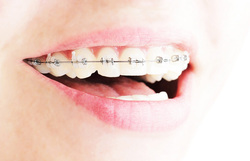
When you have crowded front teeth and decide to get a smile makeover, you will have two considerable dental treatment options, to go for invisalign or traditional veneers. Both are popular and effective methods used in straightening your teeth. Each has pros and cons that you have to be familiar with to have better decisions and see which of them can go perfectly with your preferences.
Straighten up with invisalign
Invisalign is a method that makes use of clear, removal aligners instead of metal wires, or other traditional means of straightening teeth that are likely to irritate the gums. There are a lot of advantages of applying invisalign. A few to mention includes its ability to treat various cases of teeth alignment issues, you can enjoy whatever food you want, it can be removed at any time, it is virtually invisible and comfortable. Also, this is best for people who have fainter hearts to go through painful dental treatments.
The use of Traditional veneers
Traditional dental veneers are used to address many cases of dental issues including crowding, overlapping, discoloration, poor alignment, and other teeth divergences. This method is the best way to address the concerns of those people who don’t have enough time to wait and see the results. This makes use of ultra-thin materials to serve as director.
The comparison
While the use of invisalign is a good way to straighten up your teeth, one has to wait for quite a longer period of time before one will notice the difference. This is a good option for those people who don’t want to go through painful treatments like that of veneers. Being invisible maybe is the highlight of this method but the overall process can positively affect the overall health of the teeth. Rather than just merely covering up the flaws, invisalign can help you deal with other issues other than your aesthetic concerns. Extreme maintenance needs are not really that necessary and they are way very easy to replace once they break or lose.
On the other hand, the use of traditional veneers will have to make you go through painful treatments. Though the tooth enamel is permanently removed and covered up by plastic or porcelain, the use of veneer is not considered as a permanent solution. Metals being used have the tendency to chip or break so they have to be replaced and maintained usually every 5 to 10 years. Discoloration of teeth and plaque build-up may as well become a problem in the latter. Overtime, the process may have to get a little more expensive by then. Rather being a complete solution, the use of traditional veneers somehow is just a way to cover up the imperfection and that it is more likely for cosmetic purposes. The effect as well may not turn out really that good, depending on the skill of the dentist.
There are several pros and cons of each side. For you to be able to make the right choice, initially, you have to assess your preferences and needs and weigh which of the following methods is best for you.
Straighten up with invisalign
Invisalign is a method that makes use of clear, removal aligners instead of metal wires, or other traditional means of straightening teeth that are likely to irritate the gums. There are a lot of advantages of applying invisalign. A few to mention includes its ability to treat various cases of teeth alignment issues, you can enjoy whatever food you want, it can be removed at any time, it is virtually invisible and comfortable. Also, this is best for people who have fainter hearts to go through painful dental treatments.
The use of Traditional veneers
Traditional dental veneers are used to address many cases of dental issues including crowding, overlapping, discoloration, poor alignment, and other teeth divergences. This method is the best way to address the concerns of those people who don’t have enough time to wait and see the results. This makes use of ultra-thin materials to serve as director.
The comparison
While the use of invisalign is a good way to straighten up your teeth, one has to wait for quite a longer period of time before one will notice the difference. This is a good option for those people who don’t want to go through painful treatments like that of veneers. Being invisible maybe is the highlight of this method but the overall process can positively affect the overall health of the teeth. Rather than just merely covering up the flaws, invisalign can help you deal with other issues other than your aesthetic concerns. Extreme maintenance needs are not really that necessary and they are way very easy to replace once they break or lose.
On the other hand, the use of traditional veneers will have to make you go through painful treatments. Though the tooth enamel is permanently removed and covered up by plastic or porcelain, the use of veneer is not considered as a permanent solution. Metals being used have the tendency to chip or break so they have to be replaced and maintained usually every 5 to 10 years. Discoloration of teeth and plaque build-up may as well become a problem in the latter. Overtime, the process may have to get a little more expensive by then. Rather being a complete solution, the use of traditional veneers somehow is just a way to cover up the imperfection and that it is more likely for cosmetic purposes. The effect as well may not turn out really that good, depending on the skill of the dentist.
There are several pros and cons of each side. For you to be able to make the right choice, initially, you have to assess your preferences and needs and weigh which of the following methods is best for you.
 RSS Feed
RSS Feed